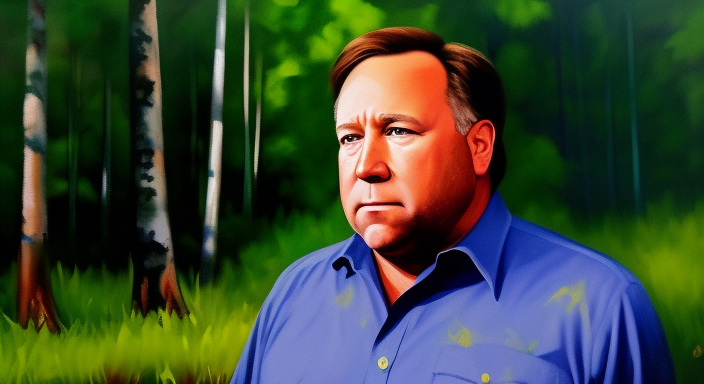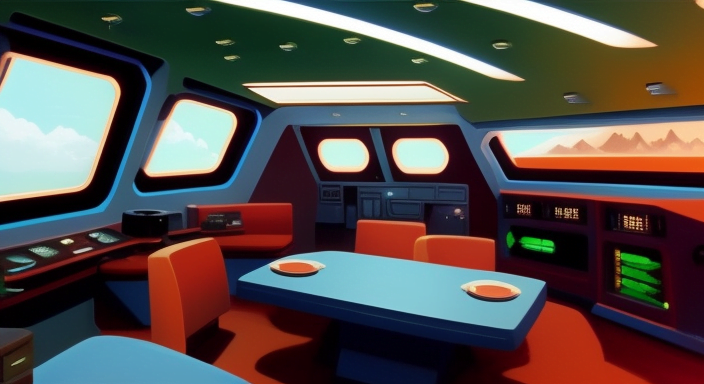I’m glad I didn’t rush into this conversation.
This is about generative art, using predictive models, which you might hear lumped together as ‘AI art’ these days. I don’t want to use that term for it (though, you know, no promises I don’t mess up and do that), and I don’t want to fall into the trap of that, of treating it like ‘an artificial intelligence.’ It’s not. The term I use for it is Generative Art, which media you can feed into a machine, and then make that machine spit out results based on composing those pieces.
There are two big reasons to use this term instead of ‘AI art.’ The first is that it’s just not AI. AI implies an intelligence, which this absolutely is not and cannot be. There cannot be intention behind the accumulated behaviour of a statistical average. Calling it AI is a cloak thrown over a system – a very clever system! – that’s able to divine fuzzy trends in how people sort and categorise things. The other thing is that calling it generative art connects it to previously generative art – institutions of technological systems designed to make artistic forms in a way that complicates the intention of the artist. This is a tradition that reaches back a long way, and sure, it includes things like these generative art systems, but also random graphical output demos on disks back in the 90s, noise generators in Photoshop, messy blurs, picrews, and even things like tie-die art, and when you can put them in that context, you’re going to be able to extract it from a lot of hype about it, both positively and negatively.
Let’s talk about it, then.
There are two basic ‘problems’ presented by generative art, both for and against. The problem of generative art that talks about how great and perfect it is, is that it’s so good, it will replace the job of artists, because someone will instead use this system to pump out artwork for things, at a high standard of skill, destroying the livelihood of artists that are already existing in tenuous spaces. The other side of it, which points out how terrible this art is, is that this art is very easy to make and floods the marketplace and now we’re going to have to wade through generative art that is, itself, heavily influenced by other generative art. Both of these problems can be spiralled into a heavily apocalyptic form and whichever side of that you fall on, but neither of them are, inherently, wrong or not problems.
The first one looks to me like artists are economically unsafe. The second looks to me like the internet is undermoderated, which is two problems I already considered a thing. Then there’s this whole argument about copyright, which gets to exist with a bunch of astersisks on it, where people who do not like or believe in current modern copyright law are still against Generative Art systems because they are violating copyright law, probably or kinda or maybe. Like almost by definition, this is transformative artwork based on engaging with the existing artwork. This is a bit thornier than it looks, because on the one hand they’re kind of not, but on the other hand, we do know that these systems aggressively sought to circumvent anti-copying methods. One of the first things these softwares were taught to do was to remove watermarks from existing images, because they wanted to train on things like Getty Images and not be confused by the watermarks on those image archives, and like, Getty thing it’s okay for you to use their images if you use the versions with the watermarks.
So they used the version they were allowed to use, then used that version to make it look like the version they weren’t allowed to use, and like, honestly, the fact that the rules there get stupid is kind of one of those things about how copyright law, as it functions is, itself, broken… especially when you know Getty watermark images that are public domain and not theirs to exclusively distribute because you know, they’re allowed to use public domain images for what they like, and they decide to add their watermark and distribute them as now, their images, which is to say, this is a great example of a shithead fighting a shithead.
But also also: once this tech for removing watermarks is in place, anyone who isn’t operating at Getty’s scale is now impacted by this toolset available and artist who were already dealing with the art theft on the mass scale of the internet were already in a losing arms race with shitheads at large. I dislike this and it’s one of the reasons why I think of the problems in this system as being primarily about ethical corpuses.
For a lot of these systems, hypothetically, you can dump nothing but public domain art into them, then, with guidance from the right people enough, it will generate in evolutionary models, art that’s close enough to the other corpuses to start generating the stuff that looks indistinguishable from the unethical corpus. And that’s… awkward too, because at that point the only difference between this entirely hypothetical model and the current disrespectful models is a bit of lead time. That’s a problem.
There are other, more specific problems which seem to me to be kind of uh, extensions of existing problems. For example, it’s possible to use generative art to mimic the style of other, well-known, famous artists, and you could even claim that that art was made by that artist. And while that may feel icky – because this tool sure feels icky and people are scared of it – it’s an existing crime. It’s called counterfeiting. Falsifying the provenance of an artwork is known as a problem, and hiring artists to copy an art style – assuming you don’t claim otherwise – is a known business choice. Heck, it’s important to entire industries – Disney’s entire model of movie making starts with someone drawing artwork and then getting an entire order of people to mimic that art style in subtly different artwork… and those people aren’t paid enough or respected enough and their entire industry gets farmed out now to countries with lax labor laws and that sucks too, but that’s not a new problem.
Were you already able to know the provenance of art you see attributed? I love Rumiko Takahashi’s art in Ranma 1/2 but she had assistants and I don’t know how much of the art in that series is hers and how much is the assistant’s. The idea that I know the provenance of any given Ranma 1/2 page is itself running up to a black box where credit is already improperly distributed. Not saying it’s not a problem to fail to credit, and we can fix that problem, but we already accept a lot of people being inadequately credited for their art and inadequately compensated for it.
What I think is that this is a technological development where my resistance is literally no impact. I don’t comission art of my OCs, even when I try to, but I know my position is a little odd. I would like to have a large supply of low-effort art that I could use for game prototypes and concept work, so the idea of it is desireable. On the other hand, talking about it in public would result in people being irritating. And I am being asked to teach a class, about these tools and how to use them and how to get the best out of them. One major component of this class is the importance of provenance; of making it clear when what you were doing was generated this way, whether with generative visual art or generative text media. So I’m being paid to understand these things and impart a good use case for these tools on an audience of students, which doesn’t give me a strong looking philosophical position to argue for or against these tools. I’m kind of alright either way.
I have played with these tools. I say play, specifically. I think they’re good toys. I think they’re really interesting for creative forms of media. I have a longstanding model that all things that get made out of either horny or spite; either they satisfy a want in you or someone did a bad version and you want to do something better. I find generative art gives me something to argue with, something to complain about, no, you fucked up, you did a bad job, you can improve this image or this text with this and that point of resistance is useful, for me, to be creative.
This kind of thing is a toolset that to me just looks like another method for generating artwork that people are going to develop as a skillset, and be able to get distinct, meaningfully interesting results out of… as well as a lot of crap. There are a lot of bad artists out there. There’s a lot of free bad art out there. Have you ever browsed the public domain or free art resource websites? There’s tons of garbage out there, really just shocking amounts. Right now if I want to avoid generative art because it’s a bother to get into arguments about it then I actually cut myself off from a lot of art assets that are meant to be available for poor indie developers because I can’t be sure they’re not generated art.
There are however three things around this movement that I think are worth holding on to, things that I think of as ‘positive developments.’
The first is, if you’re a tenuous industry which involves artists, like, say, board game developers or TTRPG developers with the money to do so, take a stand on paying current, conventional artists for their work. This is a good principle in general at the best of times. Businesses that pivot wholesale to generative art are doing a disservice to an existing group of workers, and it’s harmful. Even if you don’t have a philosophical position against generative art, you should be treating the conventional artists you cultivated like they’re your actual workers and make sure that they’re getting paid. Honestly, generative art looks like a useful tool for conventional artists to generated poses for reference and general blocking or framing for possible scenes, in much the same way photobashing is a great skillset with a particular style. In the TTRPG space, which is a small pool, seeing big movers say ‘no, we’re not using generative art for final products’ is a good thing.
Second, playing around with generative art should not be seen as a moral failing or as participation in a dreadful sin. These are interesting digital tools and toys, and particularly, if you were interested in generating artwork of (say) your OCs, you’re going to run into limits of generative art, like places where you can’t get the artwork to do specifics you want, convey specific vibes. The generator may get you a lot closer than you ever imagined, it might even get you to imagine things you never would have considered without it, and that’s good, but if you want the next step, an artist is probably going to be your best bet, and being able to show them ‘this is the kind of thing I want, BUT,’ is really valuable, and it’s really valuable if they can look at what you’ve generated without going ‘ew’ or making you feel ashamed.
Third, this is making people pay attention to and get involved in provenance more. Sourcing where you get artworks from, including being able to say ‘hey, I generated this from <this generator> and here are my prompts’ is a really interesting form of provenance, and the willingness to do that is, itself, part of a push towards sourcing and recognising origin points. I grew up on an internet where you linked people to just images and part of that was because they’d often be on things that loaded slowly, so just the image was often faster for getting people to see what you were talking about. But over time I’ve realised that linking to artists tumblrs and twitters for the embeds is just a better way to do things… and if we’re going to be seeing more of this middle-of-the-road generative model media, being able to and willing to point to it – just like with shutterstock model and video content – is a good thing.
Pay workers, support artists, recognise the value of these tools, and if someone out there is working on a machine which does have an entirely public domain corpus, I would love to see it, if nothing else, out of sheer curiosity.


